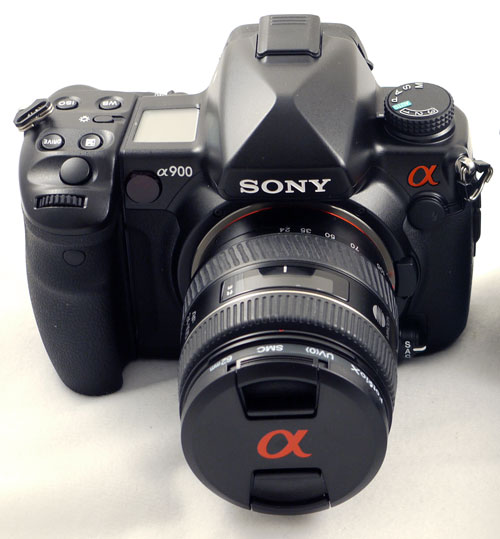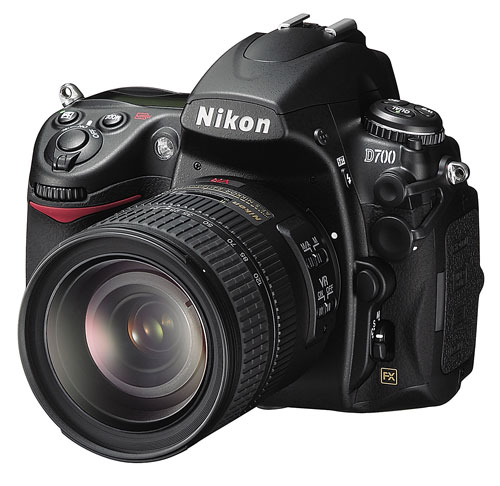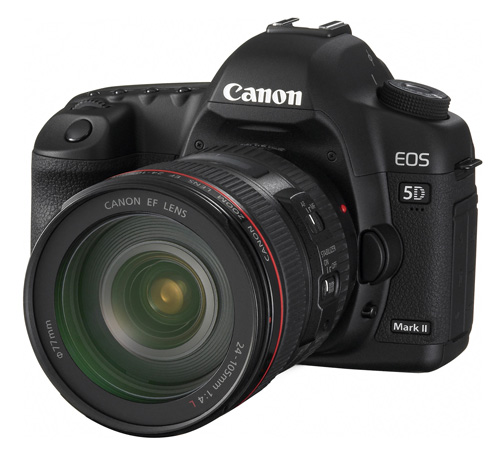Digital Cameras for the Holidays
by Wesley Fink on November 27, 2008 12:00 AM EST- Posted in
- Digital Camera
Full-Frame DSLRs
Just over a year ago we were predicting that the professional DSLR market would likely move completely to the full-size digital sensor. The speed with which this has actually happened is pretty impressive. A little over a year ago only Canon played alone in the full-frame arena, and their top selling full-frame pro model, the 1DS Mark II, was selling for $8000. Now just over a year later the top three camera manufacturers - Canon, Nikon, and Sony - all have full-frame offerings, and all of them have full-frame models that sell for $3000 or less.

Since acquiring Minolta, Sony has been aiming for more respect in the camera industry. A key part of that strategy was the launch of a full-frame Sony DSLR, which finally happened in the last couple of months. The new Sony A900 is not just another offering either, but a new full-frame solution. First, it features the highest resolution full-frame sensor you can buy with the 24.6MP Sony sensor. Pundits said Sony couldn't make a full-frame with Image Stabilization in the body, but that is exactly what they did. Steady Shot works great and makes any of the multitude of Sony and Minolta lenses that mount on the A900 image stabilized.
There is also the viewfinder. If anyone doubted Sony in the optics department they have only to look through the 100% view of the A900 viewfinder to be reminded again what optics and full-frame are all about. In fact, the Sony viewfinder is clearly the best, biggest, and brightest you will find in any current DSLR.
The A900 is not without its issues, however. 24.6MP is an incredible amount of detail, but noise starts to become a problem at ISO 1600. Everyone would like to see lower noise at the higher ISOs, but the detail captured at the highest ISOs, even with higher noise, is still very impressive. Sony has a huge lens lineup, mostly brought over direct form Minolta, but many of these designs could use a refresh. Also in terms of continuous speed, Sony, with all their mirror innovations like parallel link, still falls in the middle at 5 FPS between the super-high speed 9 FPS D3 and the new 3.5 FPS Canon 5D Mark II.

The Nikon D700 is the new cheaper Nikon full-frame designed to compete with the Sony A900 and the Canon 5D Mark II. When it launched just a few months ago it had no real peers, but now that the 24.6MP Sony A900 is shipping and the Canon 5D Mark II is 21.1MP, the Nikon line is starting to look like a new full-frame should be on the way. Nothing we have tested rivals the incredible low noise of the Nikon sensor, and D700 speed with the right battery is a blistering 8 FPS.

On paper, the Canon 5D Mark II looks like the one to beat in this category. After all Canon was first to offer a full-frame at the low price of around $3000 over three years ago, and Canon themselves proclaim the new 5D Mark II sensor the most advanced they make - better even than the $8000 1Ds Mark III. After the 50D failed to impress as completely as many expected of a 15.1MP Canon, most are waiting until the 5D Mark II production models start landing next week to decide how good they are.
The 5D Mark II updates everything to the very latest thinking in digital technology, including the two Live View modes, and a new twist that will likely be just the beginning of a revolution in the DSLR market. The Canon 5D Mark II also features a true 1080i HD movie mode that is pretty impressive in the early samples Canon has released. This true HD movie capability also auto-focuses. 21.1MP on a full-frame sensor means much bigger pixels than 15.1MP on a 1.6X crop sensor, so high hopes abound. Canon had the guts to include 25600 as an ISO speed option on the new 5D, matching the Nikon D3 and D700 in top ISO speed. If it is close to as good as the Nikon full-frames at high ISO it will not be long until you will see a Nikon D3x. You can be sure a Canon 1Ds Mark IV is also on its way early next year.
It is impossible to make a recommendation in the full-frame category because each camera in the group excels in different areas, and the decision will be based on your needs and the lens system you now use or choose. The Sony delivers the highest resolution any reviewer has ever tested, speed is good, and the viewfinder is the best. Ergonomics and ease-of-use are superb, but it is weak in high ISO noise at this point - which possibly will be much improved (as in the A700) with future firmware updates. The Nikons have the best High ISO performance and speed, but with half the resolution of the Sony A900. Still, for action or sports nothing comes close to the speed of the Nikon full-frames. The Canon 5D Mark II is the slowest of the group on continuous speed, but resolution may come close to the Sony and high ISO performance could be equal or near the Nikon full-frames.
We will soon have more answers to the question of which full-frame is "best", but the market niches that each of these three target will still likely make them three very different solutions for the full-frame market.










41 Comments
View All Comments
Johnmcl7 - Thursday, November 27, 2008 - link
Strange explanation - the LX3 is a compact camera, a DSLR is far bigger and heavier leaving the two types of devices for very different uses.The G1 isn't comparable either as it's also quite a bit bigger, I currently use an LX2 for when the DSLR is just too big as the LX2 slips in a pocket and is unobtrusive. The LX3 looks to be very good compact camera for those looking for a high quality compact to compliment a bigger camera.
John